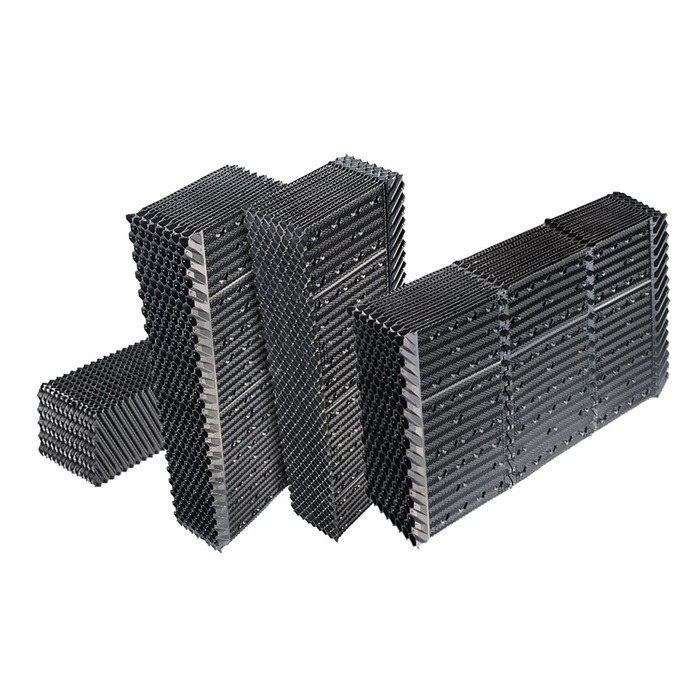Introduction
Anti-fouling coatings are applied to the fill media. These coatings act as a protective barrier against microbial growth, scale buildup, and dirt accumulation, thereby enhancing the cooling tower’s efficiency and longevity. With advancements in material science, modern anti-fouling coatings are designed to resist extreme environmental conditions, chemicals, and UV radiation while minimizing the need for frequent cleaning. Their implementation offers significant cost savings, improved environmental sustainability, and a reduction in the use of harmful water treatment chemicals. In this discussion, we will explore the different types of anti-fouling coatings, their benefits, applications, and why they are a vital solution for maintaining efficient cooling tower operation. Cooling towers are critical components in various industrial and commercial applications, including power plants, HVAC systems, chemical processing units, and manufacturing facilities. These towers help dissipate excess heat by allowing water to evaporate, effectively cooling the system. However, over time, contaminants such as scale, dirt, algae, bacteria, and biofilms accumulate on the fill media—the structured or splash-type material inside the tower that increases surface area for heat exchange. This phenomenon, known as fouling, significantly impacts the efficiency and performance of the cooling tower.
Types of Anti-Fouling Coatings
Several types of anti-fouling coatings are used for cooling tower fill media, each designed to address specific fouling challenges:
Hydrophobic Coatings
- These coatings create a water-repellent surface that prevents the accumulation of moisture and organic debris.
- They help reduce biofilm formation by limiting the adhesion of bacteria and algae.
- Hydrophobic coatings also make the cleaning process easier by allowing contaminants to slide off instead of sticking to the surface.
Antimicrobial Coatings
- These coatings contain biocidal agents that actively kill bacteria, fungi, and algae, preventing biofouling.
- They help maintain hygienic conditions in cooling towers, which is especially important in industries such as food processing and pharmaceuticals.
- By preventing microbial growth, these coatings reduce the need for excessive chemical treatments like chlorine or biocides.
Non-Stick Coatings
- Designed to prevent dirt, minerals, and other particles from adhering to the surface of the fill media.
- These coatings use materials such as fluoropolymers or silicone-based compounds that create a smooth surface, reducing buildup and improving water flow.
- They also enhance the efficiency of heat exchange by keeping the fill media clean for longer periods.
Chemical-Resistant Coatings
- Some cooling towers require harsh chemical treatments for water quality management, which can degrade fill media over time.
- Chemical-resistant coatings provide protection against corrosive substances, such as acids and alkalis, extending the durability of the fill material.
- These coatings are particularly useful in industries like petrochemicals, where exposure to aggressive chemicals is common.
UV-Resistant Coatings
- Cooling towers are often exposed to direct sunlight, leading to degradation of plastic or polymer-based fill media.
- UV-resistant coatings protect the material from breaking down due to prolonged exposure to ultraviolet radiation.
- This extends the operational life of the fill media and prevents the release of microplastics into the water system.
Benefits of Anti-Fouling Coatings
The application of anti-fouling coatings offers numerous advantages in maintaining cooling tower efficiency and longevity:
Improved Efficiency
- Reduces the formation of scale and microbial growth, allowing for better heat exchange.
- Prevents blockages in the cooling tower, ensuring smooth water flow and optimal performance.
Extended Lifespan of Fill Media
- Protects the fill material from chemical corrosion, UV degradation, and biofouling.
- Reduces wear and tear, leading to a longer operational life of the cooling tower components.
Lower Maintenance Costs
- Minimizes the need for frequent cleaning and expensive mechanical removal of fouling deposits.
- Reduces labor costs associated with maintenance and prolongs service intervals.
Reduced Water Treatment Requirements
- Since coatings prevent biofouling, there is less reliance on chemicals such as chlorine and biocides.
- Helps maintain water quality while reducing the environmental impact of chemical discharge.
Environmental Protection
- Decreases the usage of harmful water treatment chemicals, leading to a more sustainable cooling system.
- Prevents the release of plastic particles from degraded fill media into the environment.
Applications of Anti-Fouling Coatings
Anti-fouling coatings are widely used across various industries to enhance cooling tower performance and longevity:
Industrial Cooling Towers
- Used in manufacturing plants, refineries, and power stations where continuous cooling is required.
- Helps maintain efficiency by preventing the accumulation of industrial residues.
HVAC Systems
- Applied in commercial and residential air conditioning systems to improve energy efficiency.
- Reduces biofouling and scaling, ensuring optimal cooling performance in large buildings.
Petrochemical Industry
- Essential for oil refineries and chemical plants where aggressive contaminants can lead to severe fouling.
- Protects cooling tower fill media from the harsh chemicals used in industrial processes.
Food and Beverage Processing
- Ensures hygienic cooling in dairy processing, breweries, and food manufacturing facilities.
- Prevents bacterial contamination and improves the overall cleanliness of cooling systems.
Pharmaceutical Industry
- Used in sterile cooling systems for drug manufacturing and bioprocessing.
- Helps maintain contamination-free environments by preventing microbial growth.
Conclusion
Anti-fouling coatings for cooling tower fill media are a highly effective solution to combat common fouling issues such as biofilm formation, scaling, and debris accumulation. By choosing the right type of coating, industries can enhance cooling efficiency, reduce maintenance costs, and extend the lifespan of their cooling tower components. Additionally, these coatings contribute to environmental sustainability by minimizing the use of chemicals and reducing energy consumption. As industries continue to seek energy-efficient and cost-effective cooling solutions, anti-fouling coatings will play a crucial role in ensuring the long-term reliability and performance of cooling tower systems. Implementing these coatings is a proactive approach to maintaining optimal heat exchange efficiency, reducing downtime, and improving overall operational performance. By utilizing hydrophobic, antimicrobial, non-stick, chemical-resistant, and UV-resistant coatings, industries can significantly improve heat transfer efficiency, reduce downtime, and lower water treatment costs.

